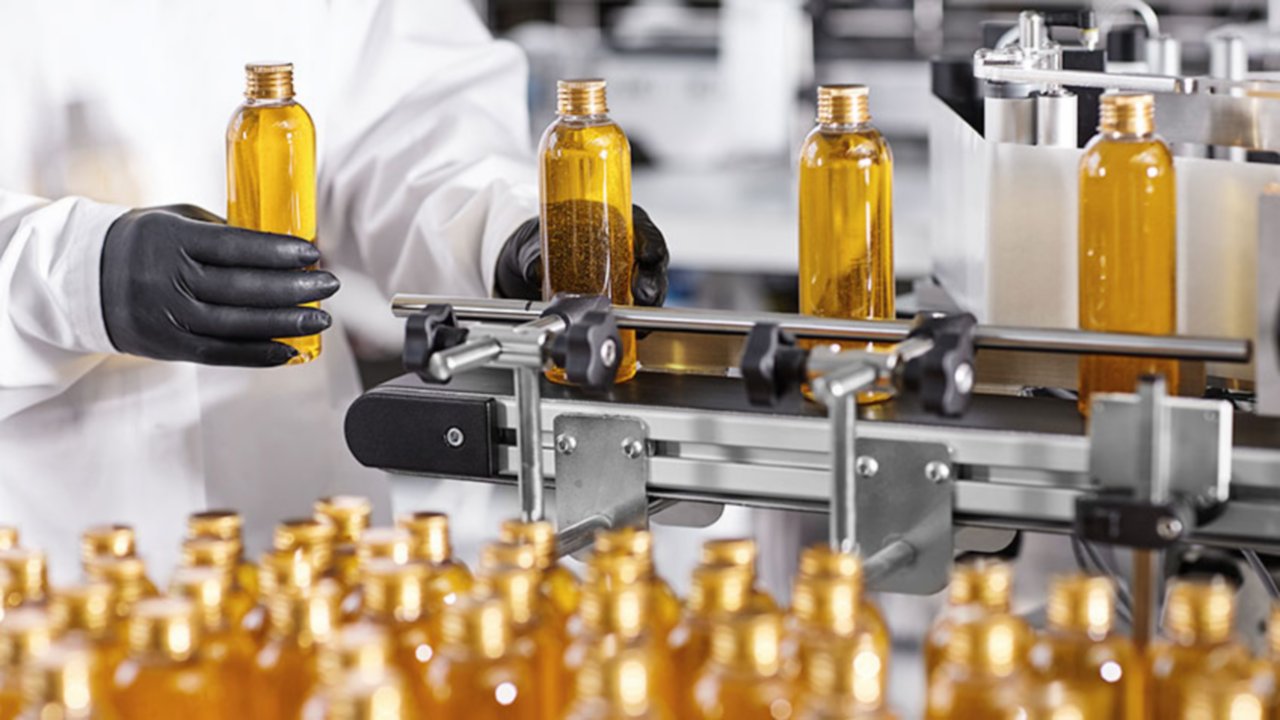Quick Startup
The PlantPAx® modern distributed control system (DCS) from Rockwell Automation was selected for the system’s process control. The company has plans to grow its capabilities and its physical footprint, and the new system enabled both. A future addition of information solutions is also enabled through a seamless integration with the FactoryTalk® software suite from Rockwell Automation. When additional lines are needed, the system design can be duplicated.
The system is responsible for controlling the transfer of ingredients from the supply tanks, the agitation of product batches in the mixing tanks, and for delivery of the batches to the finishing and packaging line.
The DCS was configured with unique faceplates and controls that allow operators to manually start and stop processes from the human machine interface devices on the production floor. Pre-allocated tags were created for the future FactoryTalk Batch system to allow operators to simply switch over from manual to automated mode once the new system was in place.
Just as important, the DCS helped simplify and shorten deployment processes in support of the tight launch timeline. One of the biggest timesavers was the use of the Rockwell Automation library of process objects, which includes pre-defined controller code, display elements and faceplates. For example, objects with embedded displays gave engineers the control variable, process variable and set point to help ease the tuning process.
“The PlantPAx system includes a display with a trend that’s already created with it,” Hinckley said. “So right off the bat you can observe your response and tune the gains.”
Engineers also took advantage of the pre-configured library objects that were available for the Endress+Hauser flow meters used on each of the supply and mixing tanks.
“Without the pre-configured objects within the Rockwell Automation system, I would have had to use the raw data from the flow-meter input and wrap my own logic around it, which would have been a lot more effort on my end,” Hinckley said. “The PlantPAx system took a lot of that low-level code and did it all for me, which saved us about two days’ worth of programming time.”
The PlantPAx alarm builder tool, which automates the alarm-configuration process, created additional time savings for building the system’s device alarms. Hinckley estimated the tool enabled him to do in one day what otherwise could have taken as long as one week to complete.
“Once we started commissioning, alarm builder was critical for getting those alarms created in time,” he said. “The number of objects in the system that we would have had to go through and manually create messages for would have been a project in itself without this tool.”
Cleaning Up Nicely
The facility was successfully operational by the company’s target date. Although it was mostly reliant on manual operations, production kicked off with single-shift, single-batch runs.
With this limited level of production underway, commissioning began to automate the processes.
It took about five weeks to program and automate the first mixing tank. However, because the equipment phases, user-defined data types (UDDT), and devices were identical for each of the five mixing tanks, the team was able to duplicate the remaining four tanks in a period of just two weeks.
“Using the same group of logic, we just created another instance of it and pointed it to another set of valves for each tank,” Hinckley said. “The duplication process was very easy.”
As a result, the five mixing tanks and all delivery sequencing were fully automated by mid-March.
Moving forward, the scalable and modular PlantPAx architecture also will allow for an easy expansion to operations. In the near future, that includes integrating FactoryTalk Batch software to support recipe executions and deliver batch reports, and FactoryTalk Historian software to log critical production information and track clean-in-place parameters. Longer term, the system will be able to support additional bulk and mixing demands if demand requires.
The results mentioned above are specific to this company’s use of Rockwell Automation products and services in conjunction with other products. Specific results may vary for other customers.
FactoryTalk, PartnerNetwork and PlantPAx are trademarks of Rockwell Automation Inc.

